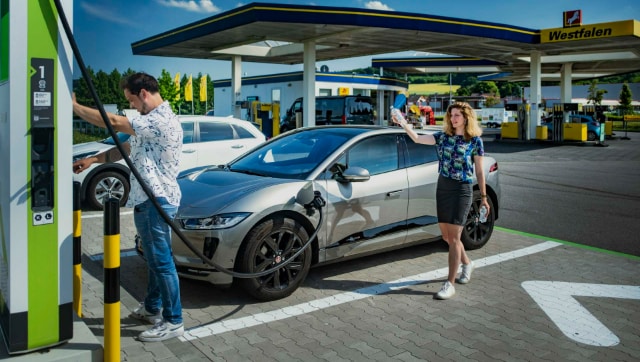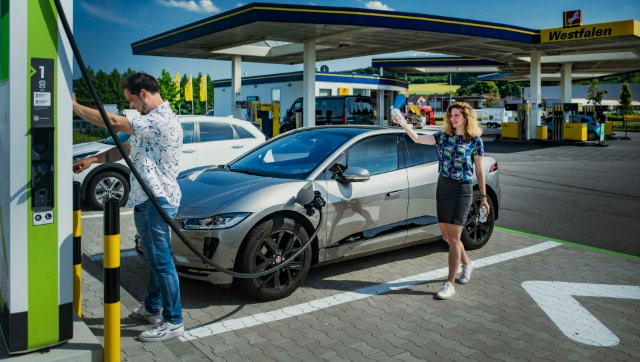Supercharged: EU kills range anxiety, passes law to set up EV charging stations at every 60km

The EU has passed a new law that lays down some pretty comprehensive rules about EVs and the EV charging industry. By end of 2025 EV drivers will find an EV charger at every 60 kilometres. The law also specifies what fast charging solution should these points provide
The European Union has approved new regulations aimed at facilitating seamless travel for EV owners throughout Europe and, at the same time, reducing harmful greenhouse gas emissions.
The regulations offer three main benefits for EV and van owners: First, they tackle “range anxiety” by expanding the EV charging infrastructure along Europe’s main highways.
Second, the rules simplify the payment process by enabling users to make payments at charging stations without the need for apps or subscriptions.
Related Articles

GoI rejects Chinese EV maker, BYD’s plan to set up a $1 billion dollar plant in India; Here’s why

Mega Indian EV War: Despite great features, global legacy, MG has failed to throw serious challenge to Tata Motors
Third, the regulations ensure transparent communication of pricing and availability to avoid surprises.
Powering Europe’s EVs
Starting in 2025, the new regulations mandate the installation of fast charging stations with a minimum power capacity of 150kW every 60km along the EU’s Trans-European Transport Network (TEN-T) highways.
This move is expected to significantly reduce range anxiety for EV owners using the main transport corridor. Moreover, charging stations along the “core” road network, which connects major cities and nodes, must have a total output capacity of at least 400kW by December 31st, 2025, with at least one charging point capable of 150kW output.
To accommodate the deployment of EV fast chargers on the “comprehensive” road network, which connects EU regions to the core network, the regulations set a longer timeframe. By December 31st, 2027, these charging stations must have a total output of at least 300kW, including one charging point capable of 150kW output, for at least 50 per cent of the comprehensive roads.
A Solid Plan
This requirement will be expanded to cover all of these roads by the end of 2030. By December 31st, 2035, charging stations on these roads should have a total output capacity of at least 600kW, with at least two charging points capable of 150kW output.
The new regulations also address the issue of misleading marketing by ensuring that charging stations marketed as 150kW must provide at least one charging point capable of delivering that speed. This is vital for current and future EV models that can handle higher power outputs.
The rules also require charging payments to be made via cards or contactless devices without the need for subscriptions, making it convenient for EV owners to access charging stations across different networks. Operators must clearly display prices, wait times, and availability of their charging points through electronic means.
Apart from electric cars and vans, the regulations also set deployment targets for heavy-duty electric vehicles, address maritime ports and airports, and promote hydrogen refuelling for both cars and trucks.
EU’s Greenhouse Gas Emission Goals
The adoption of these regulations is part of the “Fit for 55” package, a set of initiatives aimed at achieving the EU’s goal of reducing greenhouse gas emissions by 55 per cent before 2030 (compared to 1990 levels) and reaching climate neutrality by 2050.
Transportation, responsible for 25 per cent of the EU’s greenhouse gas emissions, with the majority coming from road use, is a major target for these initiatives.
Before becoming law across the EU, the regulations need to go through further formalities after being formally adopted by the Council.
Raquel Sánchez Jiménez, Spanish Minister of Transport, Mobility and Urban Agenda, expressed optimism about the new regulations, stating that they are a significant step towards providing more public recharging capacity on European streets and motorways, ultimately allowing citizens to charge their electric vehicles as easily as they currently refuel at traditional petrol stations.
For all the latest Technology News Click Here
For the latest news and updates, follow us on Google News.

